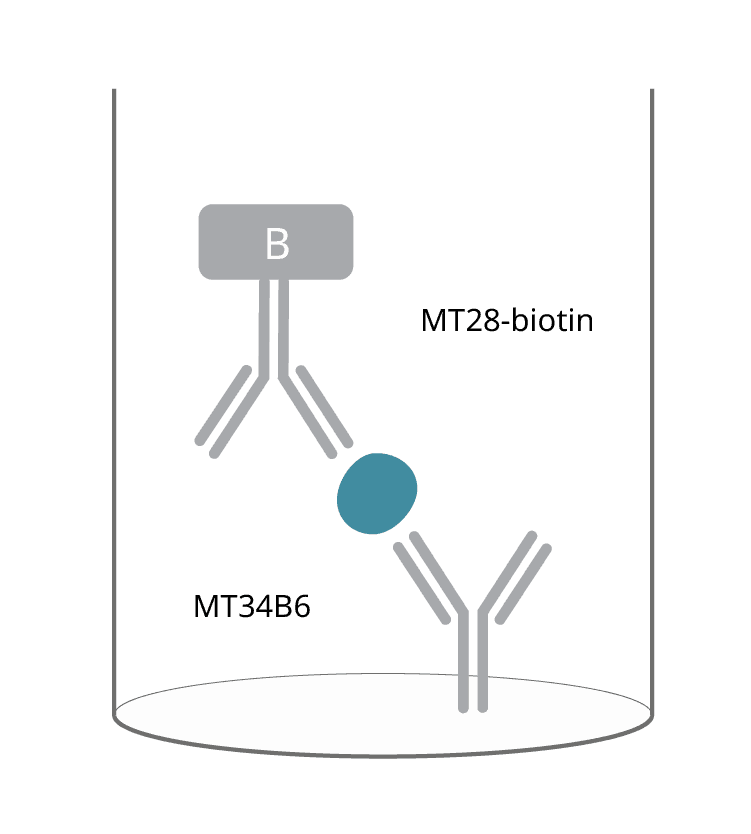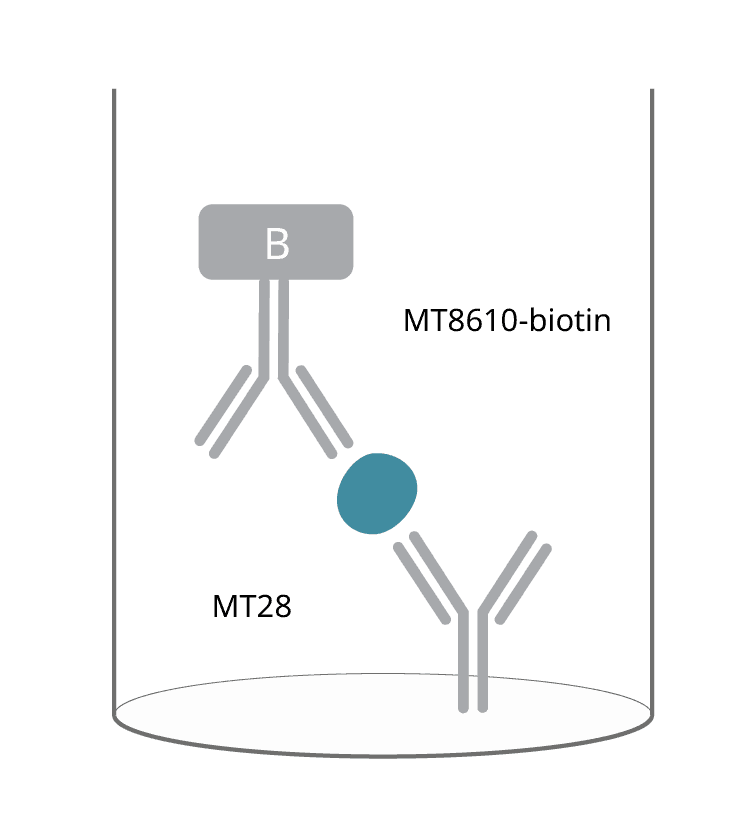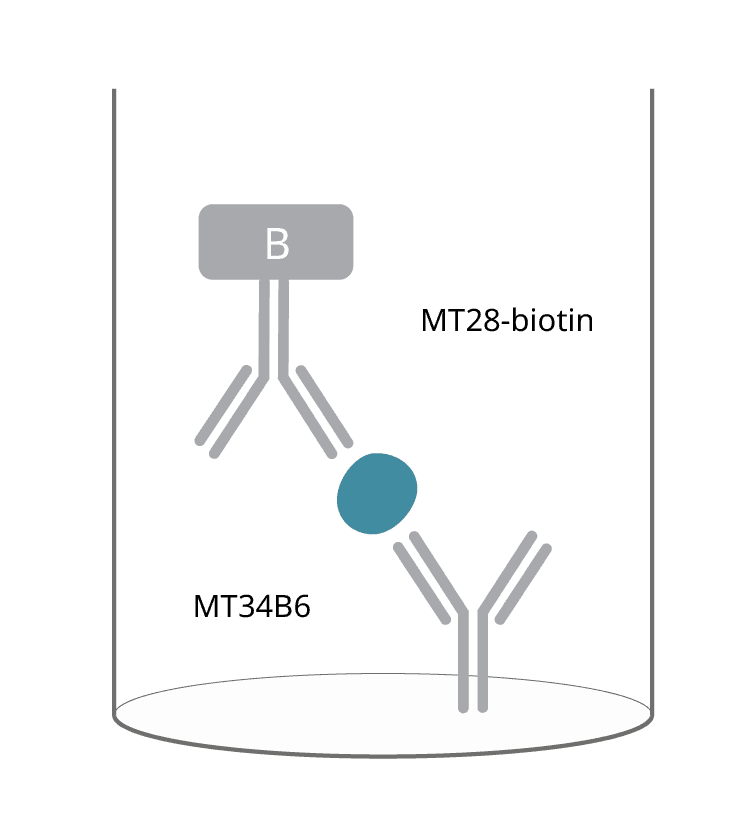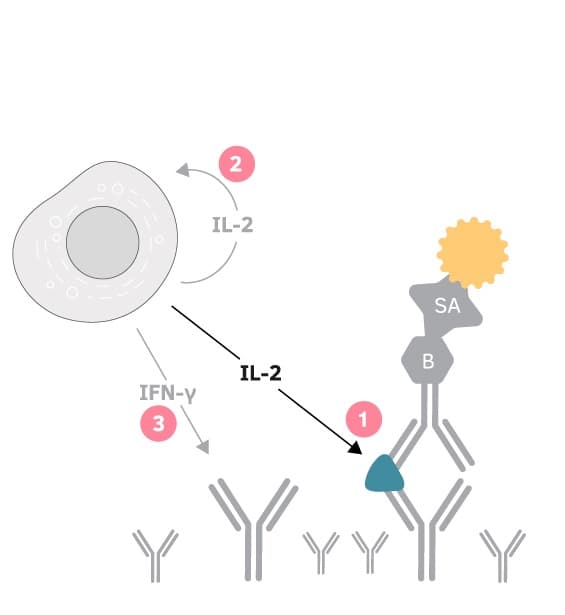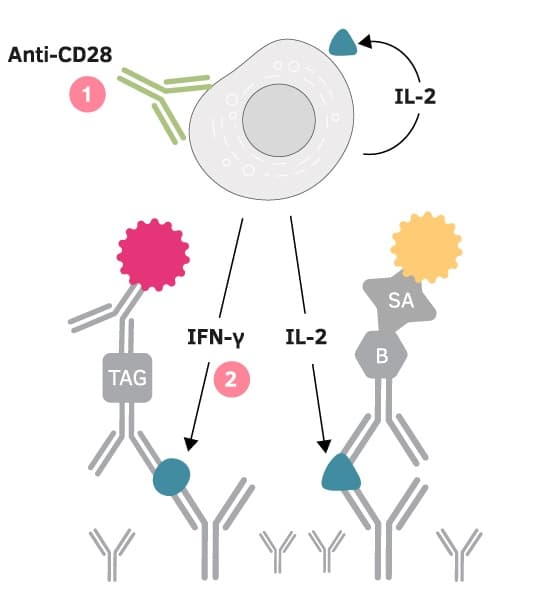Anti-human Granzyme B mAb (MT28), biotin
Anti-human Granzyme B mAb (MT28), biotin
In stock
Delivery 4-9 business days
Shipping $0
Complementary products
Complementary products
Documents
Human Granzyme B mAb guide
Selecting the appropriate mAbs is key to effectively detecting human Granzyme B, a critical serine protease secreted by cytotoxic T cells and natural killer cells. This mAb guide describes which combination of our Granzyme B mAbs should be used in different immunoassays.
Application guide: ELISA
Our human granzyme B ELISA kits can be used to detect the important cytokine in solution, whether it be in serum, cell culture media, or plasma samples.
Capture mAb: MT34B6, unconjugated
Detection mAb: MT28, biotin
Application guide: ELISpot
Our human granzyme B ELISpot kits can be used to detect the important cytokine directly upon secretion by T cells.
Capture mAb: MT28, unconjugated
Detection mAb: MT8610, biotin
Application guide: FluoroSpot
Our human granzyme B FluoroSpot kits can be used to detect the important cytokine directly upon secretion by T cells alongside other analytes in the multiplex format.
Capture mAb: MT34B6, unconjugated
Detection mAb: MT28, biotin
Get inspired!
Make sure to check out how researchers have used Mabtech's human Granzyme B ELISA, ELISpot, and FluoroSpot kits in everything from vaccine development to SARS-CoV-2 research. You can find it all in our Publication database.
Analyte combinations in FluoroSpot
Find out which analyte combinations we have evaluated in T cell FluoroSpot and which combinations are affected by capture effects or not.
What is a capture effect?
When capture antibodies with different specificities are coated together, the capture of one cytokine may affect the secretion of other cytokines. This is usually more pronounced when studying T cell responses with polyclonal stimuli compared to antigen-specific responses. Capture effects are seldom a problem and can often be counteracted by the addition of an anti-CD28 antibody.
(1) IL-2 secreted by the activated T cell is captured by coated anti-IL-2 capture antibodies. (2) As a result, IL-2-stimulation of the T cell itself (autocrine stimulation) as well as nearby T cells (paracrine stimulation) is impaired, ultimately leading to (3) decreased IFN-γ secretion.
Co-stimulation with anti-CD28
Anti-CD28 mAb provides a co-stimulatory signal to antigen-specific responses by binding to CD28 on T cells. The addition of an anti-CD28 mAb to the cell culture enhances antigen-specific responses and can counteract capture effects. For example, the presence of IL-2 capture antibodies may result in reduced activation of T cells, as capturing of IL-2 decreases the amount of available IL-2 and thereby dampens the IL-2-mediated stimulation of T cells. The addition of anti-CD28 mAb restores IFN-γ responses (depicted in the below images). Further optimization may be necessary, depending on the cells and stimuli used. Too high concentrations of the anti-CD28 mAb may result in an elevation of non-specific cytokine secretion.
(1) An anti-CD28 antibody can be added to provide a co-stimulatory signal that can restore (2) e.g. IFN-γ responses.
How to investigate capture effects
Our FluoroSpot Plus kits are evaluated for capture effects, and in studies of T cell responses we recommend co-stimulation with anti-CD28. With FluoroSpot Flex, it is possible to combine and build your own kit. For guidance look at our analyte combination table (above). Capture effects can be investigated by quantifying spot numbers in wells coated with single capture antibodies and compared to wells coated with a mixture of the capture antibodies. The compensatory effect of the anti-CD28 mAb may be assessed by comparing cells cultured with and without the anti-CD28 mAb.
Publications (85)
Analyte information
Granzyme B
| Analyte description | Granzyme B is a serine protease released by the cytoplasmic granules within cytotoxic T cells and NK cells. Granzyme B will act together with perforin and other cytotoxic mediators to induce target cell death by apoptosis. |
| Alternative names | Granzyme B, GzmB, GrB, GrzB, C11, CCPI, CGL-1, CGL1, CSP-B, CSPB, CTLA1, CTSGL1, HLP, SECT |
| Cell type | T cell, Tc, Th1, NK cell |
| Gene ID | 3002 |
You may also like

